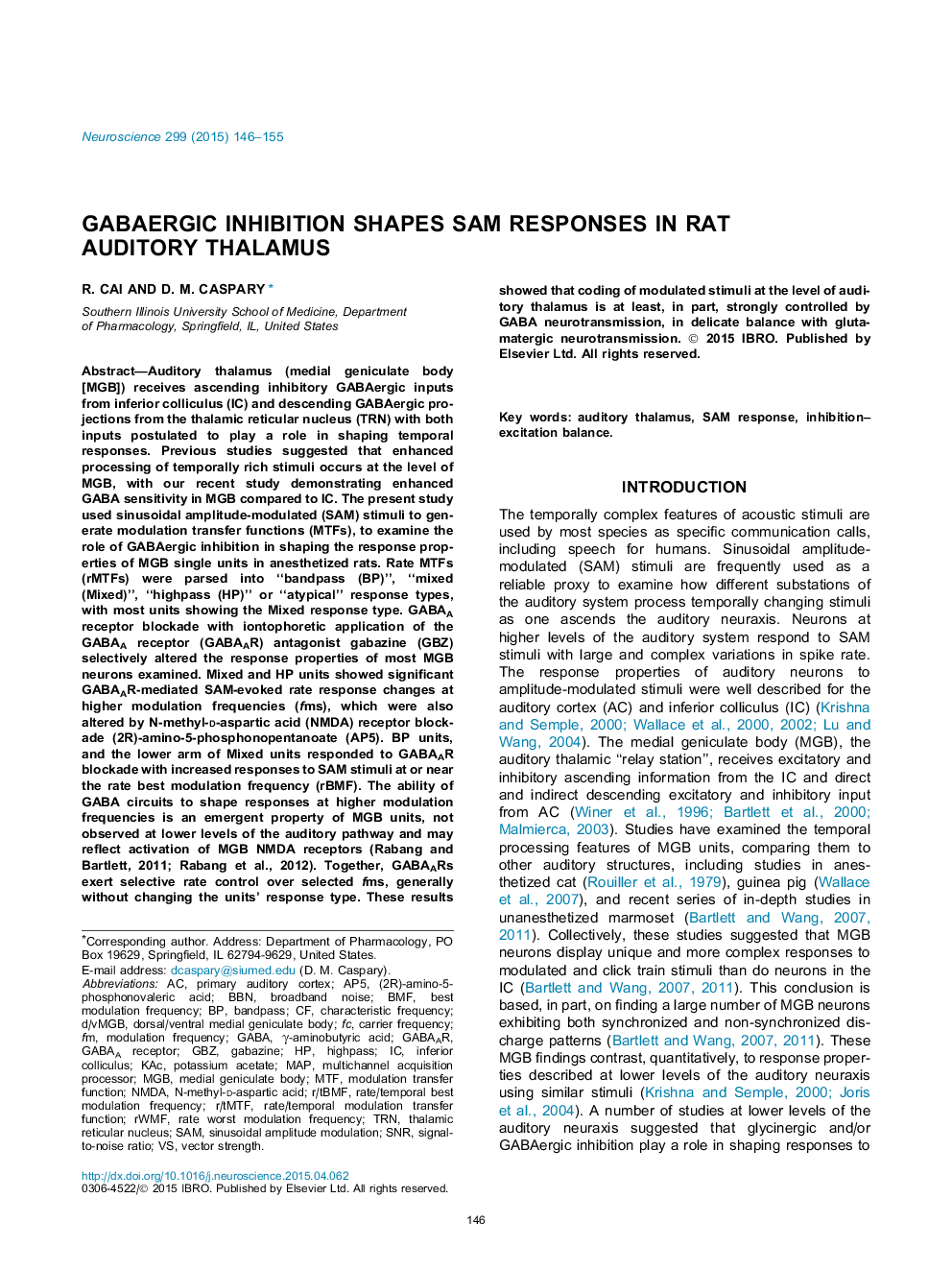| کد مقاله | کد نشریه | سال انتشار | مقاله انگلیسی | نسخه تمام متن |
|---|---|---|---|---|
| 4337474 | 1614777 | 2015 | 10 صفحه PDF | دانلود رایگان |

• Medial geniculate body shows emergent properties in its coding of modulated stimuli.
• A delicate balance of tonic GABA and NMDA signaling regulates coding of modulated signals.
• Coding of higher modulation frequencies is uniquely shaped by GABA.
Auditory thalamus (medial geniculate body [MGB]) receives ascending inhibitory GABAergic inputs from inferior colliculus (IC) and descending GABAergic projections from the thalamic reticular nucleus (TRN) with both inputs postulated to play a role in shaping temporal responses. Previous studies suggested that enhanced processing of temporally rich stimuli occurs at the level of MGB, with our recent study demonstrating enhanced GABA sensitivity in MGB compared to IC. The present study used sinusoidal amplitude-modulated (SAM) stimuli to generate modulation transfer functions (MTFs), to examine the role of GABAergic inhibition in shaping the response properties of MGB single units in anesthetized rats. Rate MTFs (rMTFs) were parsed into “bandpass (BP)”, “mixed (Mixed)”, “highpass (HP)” or “atypical” response types, with most units showing the Mixed response type. GABAA receptor blockade with iontophoretic application of the GABAA receptor (GABAAR) antagonist gabazine (GBZ) selectively altered the response properties of most MGB neurons examined. Mixed and HP units showed significant GABAAR-mediated SAM-evoked rate response changes at higher modulation frequencies (fms), which were also altered by N-methyl-d-aspartic acid (NMDA) receptor blockade (2R)-amino-5-phosphonopentanoate (AP5). BP units, and the lower arm of Mixed units responded to GABAAR blockade with increased responses to SAM stimuli at or near the rate best modulation frequency (rBMF). The ability of GABA circuits to shape responses at higher modulation frequencies is an emergent property of MGB units, not observed at lower levels of the auditory pathway and may reflect activation of MGB NMDA receptors (Rabang and Bartlett, 2011; Rabang et al., 2012). Together, GABAARs exert selective rate control over selected fms, generally without changing the units’ response type. These results showed that coding of modulated stimuli at the level of auditory thalamus is at least, in part, strongly controlled by GABA neurotransmission, in delicate balance with glutamatergic neurotransmission.
Journal: Neuroscience - Volume 299, 23 July 2015, Pages 146–155